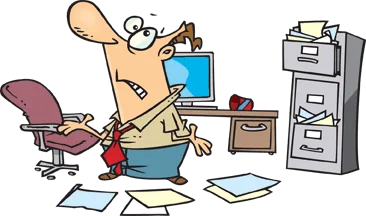General Ledger
General Ledger Journals
General Ledger
and Chart Of Accounts
In a prior lesson, we used T-Accounts to record the transactions for ABC, the lawn mowing guys.

What you didn't know at the time is that we were actually recording transactions in General Ledger Accounts.
A General Ledger is just a formal set of T-Accounts. Each account that we want to track and keep up with has a separate page or pages maintained in a record book called the General Ledger.
The book is organized into major sections just like the Accounting Equation that we studied in previous lessons. Do you have any idea what these sections might be ?
Come on this question is not that hard. The general ledger’s major sections are Assets, Liabilities, Owner’s Equity, Revenues, Expenses, and Draws.
For each item (account) in our General Ledger, we record the increases and decreases for a period (usually a month) and calculate its ending balance. The ending balance of the account is easily determined by adding the increases and subtracting the decreases from the account’s beginning period balance.
Ending Account Balance = Beginning Balance + Increases – Decreases
If you noticed in my above equation I used the terms increases and decreases. If you also recall in our discussion about debits, I tried to stress the fact that when applied to bookkeeping these terms need to be associated with the types of accounts .
We also should know by now that the type of accounts have a normal balance that is either a debit or credit balance. So actually the above equation is stated in two ways. The equation is stated one way for debit balance accounts, and another way for credit balance accounts.
Using our bookkeeping terms debits and credits, we come up with the following equations:
Debit Balance Accounts Equation
Ending Account Balance for Normal Debit Balance Accounts = Beginning Balance + Debits(Increases) – Credits(Decreases)
Ending Account Balance for Normal Debit Balance Accounts = Beginning Balance + Debits(Increases) – Credits(Decreases)
Credit Balance Accounts Equation
Ending Account Balance for Normal Credit Balance Accounts = Beginning Balance + Credits(Increases) – Debits(Decreases)
Ending Account Balance for Normal Credit Balance Accounts = Beginning Balance + Credits(Increases) – Debits(Decreases)
Simply stated a General Ledger is just a book containing the summarized financial transactions and balances of the accounts for all of a business’s assets, liabilities, equity, revenue, and expense accounts.
One other record that goes hand in hand with the general ledger and that we’ve touched on before and used in a prior lesson is The Chart Of Accounts .
Remember The Chart Of Accounts is simply a listing of all the accounts in the general ledger that contains the account’s name, a brief description of the account, and usually an account number assigned to aid in recording and tracking transactions.
It’s chief purpose is to serve as an aid (reference) for looking up accounts and their associated account numbers.
For this lesson, we expanded our chart of accounts by adding account numbers and grouped the numbers into ranges that represent the major type of accounts.
Chart Of Accounts For ABC Mowing
Note: The charts of accounts used in this tutorial were purposely kept simple and used to illustrate what the chart of accounts is and how it’s used. For those of you that are curious, I’ve provided a detailed list of the accounts you might encounter in the “real” world. Often a numbering system is set up with a range of numbers for assets, liabilities, equity, revenue, and expense accounts.
ABC Mowing Chart Of Accounts Assets have a range from 100-199 ; Liabilities a range from 200-299; Equity a range from 300-399; Revenues a range from 400-499; and Expenses a range from 500-699.
| Chart Of Accounts ABC Mowing | |
Assets (100-199) Account Name:Cash Account Number:100 Description:Currency , checks, and bank balance | Equity (300-399) Account Name:Owner's Capital Account Number:300 Description:Amounts invested by owner and earned by operations |
| Account Name:Accounts Receivable Account Number:110 Description:Amounts due from customers for services rendered | Account Name:Owner's Draws Account Number:310 Description:Amounts withdrawn by owner for personal expenses |
| Account Name:Inventory-Office Supplies Account Number:115 Description:On hand supplies of such items as copier & computer paper, pens, and other office supplies | Revenue (400-499) Account Name:Mowing Revenues Account Number:400 Description:Earnings from mowing and landscaping |
| Account Name:Mowing Equipment Account Number:150 Description:Mowers purchased | Expenses (500-699) Account Name:Advertising Expense Account Number:510 Description:Expenditures for TV, radio, newspaper, and other promotions |
Liabilities (200-299) Account Name:Accounts Payable Account Number:200 Description:Amounts owed suppliers for business purchases and expenses | Account Name:Mulch Expense Account Number:520 Description:Expenditures for mulch used for yard work |
| Account Name:Note Payable-Bank Account Number:210 Description:Mortgages and loans owed to bank | |
Of course most businesses have many more than our eleven accounts we used for our sample ABC business. Can you think of some other accounts that we might need and want ? How about telephone, utilities, professional fees (that’s me), salaries & wages, equipment rental, building rental, maintenance & repairs, contract labor, office equipment just to name a few.
Sample Balance Sheet and Income Statement Detail Accounts
Formal Journal and General Ledger Account look like.

